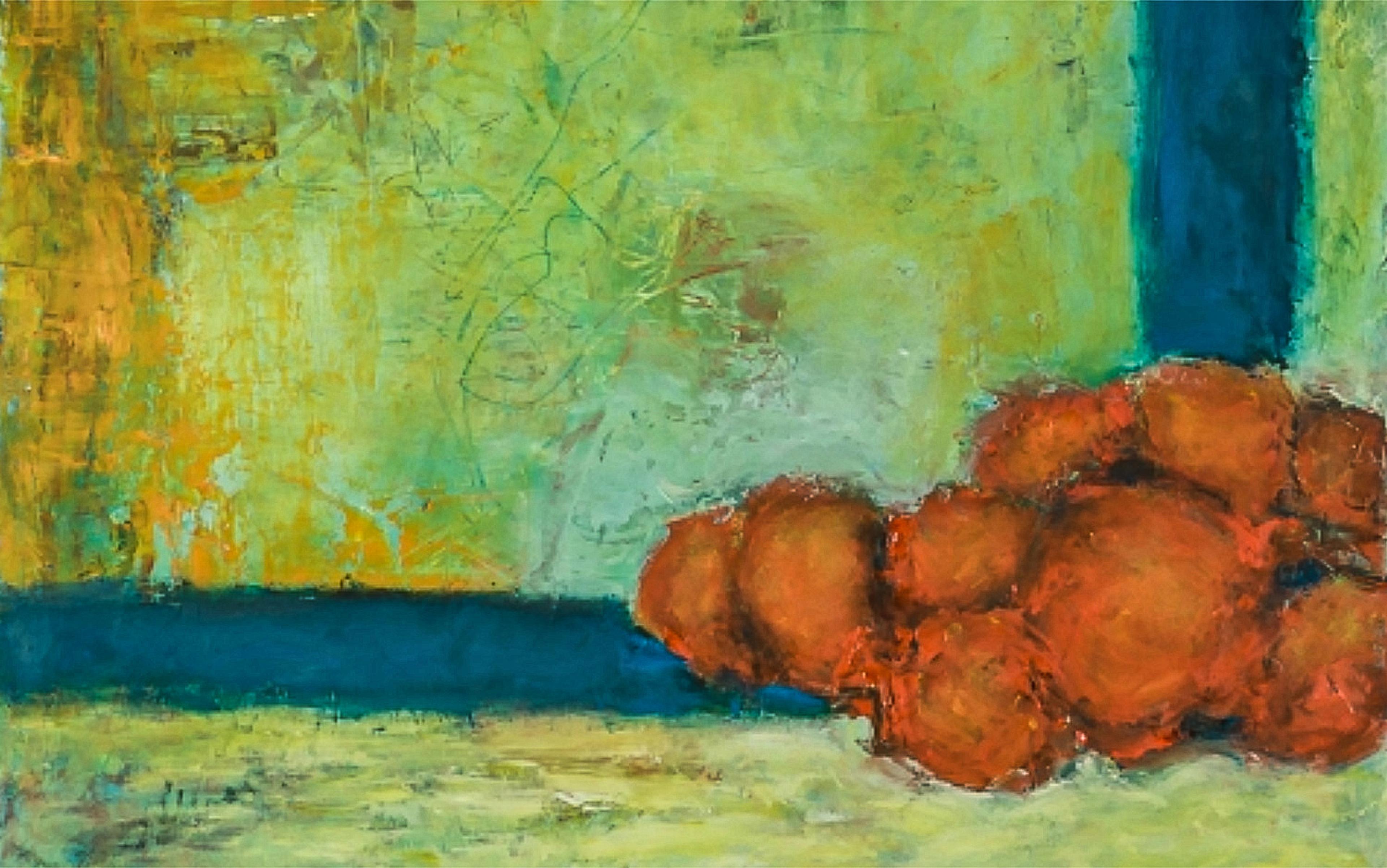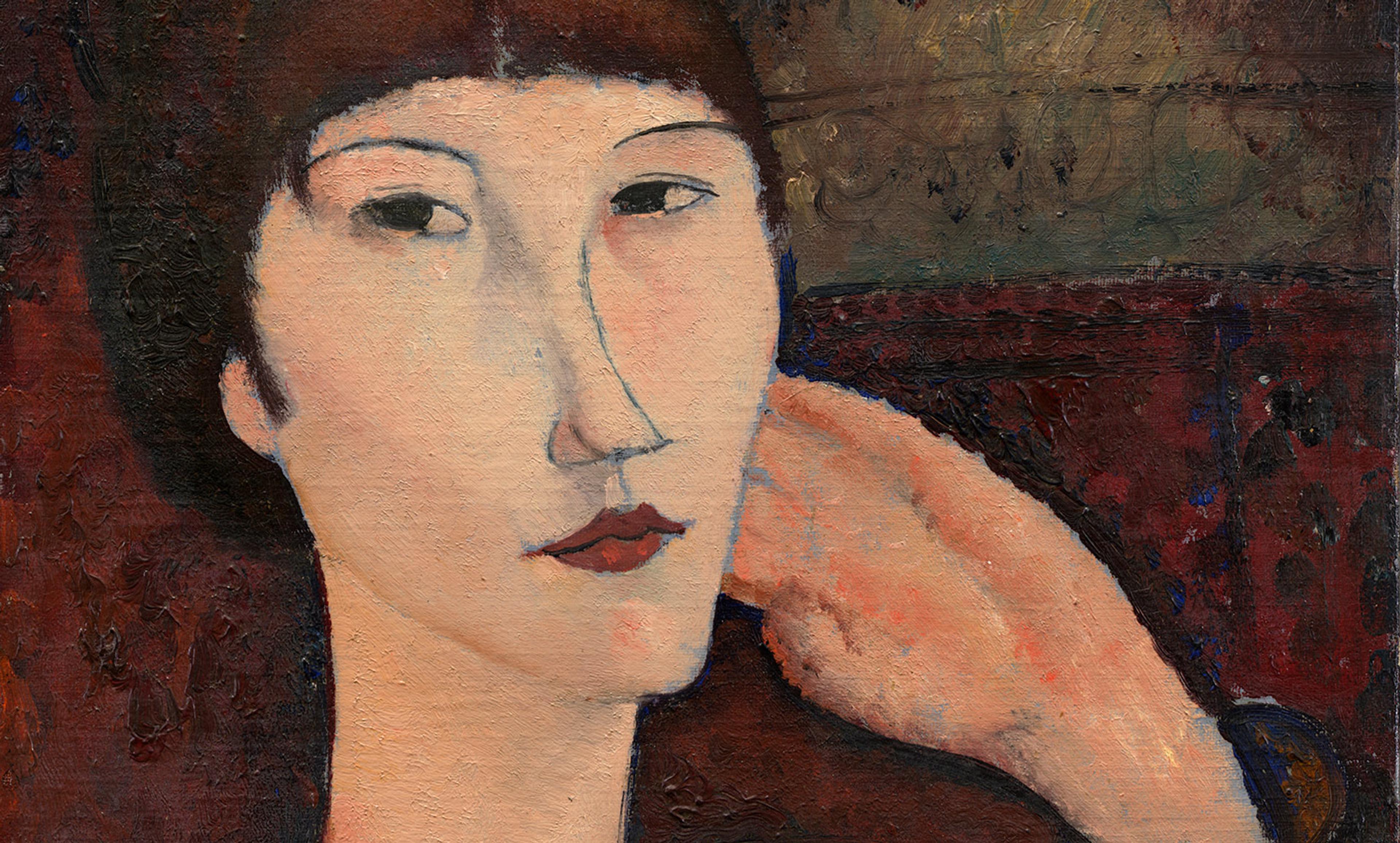P covers their ears and screams, eyes creased shut, face streaked with dirt and tears. It’s been the mother of all tantrums, and there’s no end in sight. It’s safe to say that Disneyland has been a disaster.
I’m drained, embarrassed, defeated. I am also miserably disappointed. Disneyland was one of my childhood happy places. I wanted so much for my own children to experience it with me, to feel the joy and magic, the exhilarating exhaustion of it all.
My husband retreats into a café with our eldest, while I try to manage P. Seething, on impulse I lift my phone and begin to film. It’s a disgraceful attempt to shame my child into behaving the way I want them to behave. The memory of that day makes me queasy, prickling my skin.
Fast-forward four years to 2016. P is now nine and has recently been diagnosed as autistic. I’m halfway through an MA in creative writing, currently reading an assigned text, Virginia Woolf’s Selected Short Stories, and blurring the pages with tears.
Radiating to a point men’s feet and women’s feet, black or gold-encrusted – (This foggy weather – Sugar? No, thank you – The commonwealth of the future) – the firelight darting and making the room red, save for the black figures and their bright eyes, while outside a van discharges, Miss Thingummy drinks tea at her desk, and plate-glass preserves fur coats –
Flaunted, leaf-light, drifting at corners, blown across the wheels, silver-splashed, home or not home, gathered, scattered, squandered in separate scales, swept up, down, torn, sunk, assembled – and truth?
There’s something in this brief passage that summons P into my thoughts, something in the way Woolf describes the everyday bombardment of her senses. So much input all at once, with no ability to organise it, no means of sifting through it all, information flowing at her, a sensory stream of consciousness. Woolf doesn’t – perhaps can’t? – prioritise the vision of the heron over the sound of omnibuses, or Miss Thingummy’s tea, or the snatched pieces of conversation, or the colour of the marble, or the shape of moving feet. One thing takes no precedence over another; there is no hierarchy of significance, no filter.
The Disneyland meltdown springs unbidden into my mind, along with a realisation – in reading Woolf, I am glimpsing the world as P experiences it.
Many years later, I am still struck by the uniqueness of Woolf’s writing. She seemed to perceive the world differently, as if endowed with enhanced senses, or an alien’s ability to observe from an outside perspective. Temple Grandin, an autistic writer and professor of animal science, has described herself as ‘an anthropologist on Mars’. If Grandin is the anthropologist, then Woolf is surely the poet on Mars.
Woolf is commonly believed to have suffered from either clinical depression or bipolar disorder. Neither of these conditions would exclude the possibility that she might also have been autistic. Autistic women and girls present differently than men and boys. Because they don’t conform to the stereotype, they can often be misdiagnosed as bipolar or schizophrenic. Autistic people are also at higher risk of mental health problems, probably because of the increased anxiety and stress they endure as they try to understand and adapt to a world that can feel completely alien.
P has Level 1 autism, formerly known as Asperger’s syndrome. During the many years we struggled to find answers and then support, I learned to see autistic traits at every turn. It’s a phenomenon I once called the ‘pregnancy effect’ – as soon as I became pregnant myself, pregnant women seemed to be literally everywhere I looked. And perhaps there was an element of that, though I think it goes beyond mere heightened awareness. There really are people with autistic traits everywhere you look. It’s currently believed that as many as 1 in 100 people have an autism spectrum condition.
When these traits come together in a particular way, or perhaps reach a critical mass, the result is an autistic brain
Because autistic people often face significant challenges, the strengths that come with their traits can be overlooked. Many think in pictures, develop deep and focused interests, or spot connections others might miss. They may approach ordinary situations from fresh angles, rely on routines for stability, and experience the world with heightened sensitivity. These traits can sometimes cause stress or make social interaction harder, but they can also be powerful assets. Autistic individuals often show strong focus, persistence, sharp observation, attention to detail, and advanced analytical and logical thinking. Many also demonstrate creativity, high intelligence, and a striking ability to imitate or perform.
The traits associated with autism are in fact fundamental to our species, directly linked to human intelligence, creativity and sociability. When these traits come together in a particular way, or perhaps reach a critical mass, the result is an autistic brain. With a particular configuration, the outcome can be devastating for the individual; with another, the results can be remarkable. Probable historic autistics include Albert Einstein, the 18th-century scientist Henry Cavendish, Charles Darwin, Hans Christian Andersen and Emily Dickinson. Well-known, highly successful individuals currently living with autism include the environmental activist Greta Thunberg, the actor Dan Aykroyd and the singer Susan Boyle.
If you’ve met one autistic person, you’ve met one autistic person, as the well-worn saying goes. Each is different, an individual, though by definition having certain traits in common. In a sense then, Woolf’s writing can only really give an insight into Woolf herself. Yet, as with all good literature, she taps into something wider, more universal, more fundamentally human – and to my mind, something quite probably neurodivergent. When I read Woolf, it seems to me that her thinking vibrates on the same frequency as my child’s.
So, was Woolf autistic? There’s no way to say for certain. Woolf would never have encountered the diagnosis as autism wasn’t recognised as a condition until the mid-20th century. Even today, the label resists definition. The boundary between autistic and neurotypical minds is less a hard line than a shifting frontier. At the more adaptive end of the spectrum – where Woolf may have stood – that frontier is especially blurred. The more fruitful question is not whether Woolf fits a medical category, but whether traits linked with autism shaped the originality of her vision – and what that possibility might illuminate.
Woolf’s prose often seems to skim the surface of life, recording details as though she had landed in a strange world and needed to capture its essence for others. She experiments with punctuation as part of her palette, shaping rhythm and mood as much as alliteration or stream of consciousness. Her unconventional use of semicolons, compound words and hyphens slows the reader at times, then jolts them forward with abrupt shifts and juxtapositions. These techniques can disorient, forcing readers to move at her pace. This quality places Woolf in line with what Julie Brown observes in Writers on the Spectrum (2009): autistic authors are often less concerned with anticipating the readers’ needs than neurotypical writers. They write for themselves; the reader is carried along for the ride. In Woolf’s case, that ride opened new possibilities for literature.
Perhaps her most poetic technique is the use of imagery and detail. She moves effortlessly between inner and outer worlds, sound and light and emotion. Even sensations other than sight are rendered visually, so the reader sees what is heard or felt. In the short story ‘Kew Gardens’ (1919), for example, a young couple’s talk drifts through the scene with little substance of its own:
‘Lucky it isn’t Friday,’ he observed.
‘Why? D’you believe in luck?’
‘They make you pay sixpence on Friday.’
‘What’s sixpence anyway? Isn’t it worth sixpence?’
The words matter less for their content than for the way they ripple across the story, forming an aural texture to complement the play of light and colour.
Descriptions by Woolf’s contemporaries suggest that she displayed traits now associated with autism
The interplay of sensory information is another characteristic many autistics share. Combined with acute senses of smell, sight, touch and hearing, it shapes their experience of the world. Woolf had an uncanny ability to give vivid visual form to diverse sensations. In her essay ‘On Being Ill’ (1926), she writes that ‘the words give out their scent, and ripple like leaves, and chequer us with light and shadow …’ Here language itself becomes a multisensory field, collapsing the boundaries between sight, sound and touch.
This ability is echoed in the poetry of non-verbal autistic writers in the collection May Tomorrow Be Awake (2022) by Chris Martin, who contends that autistic authors may have special access to the language of poetry.
Descriptions by Woolf’s contemporaries suggest that she displayed traits now associated with autism. But having autistic traits is not the same as being autistic. Autism is a complex, inherited condition shaped by many genes, and most people show some of its features without meeting the criteria for diagnosis. Clinicians look for challenges in communication, social interaction, and flexible imagination – what was once called the ‘triad of impairments’. These and other hallmarks, such as sensitivities to sound or light, sleep difficulties or eccentric habits of speech and gesture, can also appear in people who are not autistic. Still, it is striking that Woolf’s older half-sister, Laura Makepeace Stephen – confined for most of her life to a series of institutions as an ‘imbecile’ – may herself have been autistic. Because autism runs in families, this adds weight to the idea that Woolf, too, shared some of its characteristics.
All autistic people share certain defining features, but these show up in a unique pattern for each individual, shaping how they perceive the world and connect with others. At Level 3, the most disabling end of the spectrum, autistic people are often non-verbal and may also have intellectual disabilities that make independent living impossible. At Level 1, those same traits are less severe, allowing greater participation in the neurotypical world. For this group, what comes naturally to most people must be worked out step by step. The effort can be draining, even overwhelming. Yet it also provides a distinctive vantage point from which to observe, interpret, and relate to the world.
Because they can find neurotypical people confusing and unpredictable, many autistics are seen as aloof or withdrawn – quirky, nerdy, even rude. This is difficult to explore in Woolf’s case, since it requires observing someone in many contexts. Autistic women in particular often mask well enough to seem non-autistic in public. Women and girls also tend to crave social interaction more than boys, and are often better at adapting to get by. The rigid social rules of Woolf’s class and era may have made masking easier, since those rules could be learned by rote. Spontaneity and flexibility, by contrast, are often where autistic people struggle.
What stands out is Woolf’s preference for solitude – or, when social, her thriving in the rarefied company of the Bloomsbury group. She not only spent much time alone but wrote of solitude as vital both to her work and her sense of self. She saw herself as apart: a ‘snob’, and someone in need of ‘a room of one’s own’.
Grandma has given each of you a set of jacks. I demonstrate how to play, clumsy and decades out of practice. Your sister B attempts to copy me, ball bouncing off the table as she grabs a fistful of jacks. She laughs and gives chase.
But not you, P. I turn to find you crouched on the floor, a look of calm concentration on your face. Your jacks are lined up, interlinked in a neat row along the edge of the slate hearth. Your ball lies abandoned to one side. I feel a painful twinge in my heart.
You’ve always liked patterns, always enjoyed seeing things in order, lined up in rows. It’s the way you play. Like that time you organised your enormous Gogo collection, standing them all upright in military ranks according to colour and type. I waited in vain for you to start some game with them, to give life and voice to your favourites. It’s something you never did. You grow older and your play becomes more sophisticated – you create vignettes with your Sylvanian Families characters; design complex and aesthetically pleasing tableaus of natural objects in the garden.
It isn’t until you are a teenager that you’re able to explain your childhood world – that you didn’t fully understand that the stories and games invented by your friends were imaginary. That you believed your beloved cuddly toys were fundamentally the same as our cat Lulu, sentient and alive – the lines between object and living creature, real and imagined, blurred.
They approach the task scientifically, clinically, very much like ethnographers seeking to understand a strange culture
Woolf’s sensibility seems much the same. In most of her Selected Short Stories, people, landscapes and things are treated in equivalent terms, with the same passion and curiosity. Woolf does explore the relatedness between people. Yet she does so without much psychological depth or, rather, without depth to the relationships. In ‘An Unwritten Novel’ (1920), Woolf imagines a life and set of relationships for a fellow train passenger, then seems completely thrown by the fact that it was all her own fantasy. At the end of the story, she embraces the ‘unknown figures’, the landscape, the ‘adorable world’ all together as one, all equally mysterious.
‘A Society’ (1921) also lacks an emotional core. The characters are two-dimensional, at times seeming little more than vehicles to convey Woolf’s thoughts and words. The women in the story decide: ‘Before we bring another child into the world we must swear that we will find out what the world is like.’ They approach the task scientifically, clinically, very much like ethnographers seeking to understand a strange culture. I wonder, is this how Woolf herself apprehended the world, how she learned to understand it? The rather bizarre musings on men’s intellects and the ironic views on women’s roles are often funny, but oddly without emotional depth. There is little description of the women’s relationships with each other; they come across as emotionally wooden, even when apparently upset and excited by the pregnancy of a friend.
In the story ‘In the Orchard’ (1923), Woolf presents the same vignette from three different perspectives, including that of the orchard itself. In ‘Monday or Tuesday’ (1921), it could be argued that the heron has more of a personality than Miss Thingummy. The two characters, human and nonhuman, have an equivalent presence. As with many people in Woolf’s stories, Miss Thingummy lacks a proper name or sense of identity. In ‘Kew Gardens’, told largely from the point of view of the snail, we flit in and out of people’s minds. There is little difference in importance or weighting between them – in fact, the snail’s journey is somehow move vivid and real than that of the strolling humans:
In the oval flower-bed the snail … now appeared to be moving very slightly in its shell, and next began to labour over the crumbs of loose earth which broke away and rolled down as it passed over them. It appeared to have a definite goal in front of it, differing in this respect from the singular high stepping angular green insect … Brown cliffs with deep green lakes in the hollows, flat bladelike trees that waved from root to tip, round boulders of grey stone, vast crumpled surfaces of a thin crackling texture – all these objects lay across the snail’s progress between one stalk and another to his goal.
Research shows that autistic individuals tend to be more attracted to objects than people, while neurotypicals tend towards the reverse. I wouldn’t go so far as to say that Woolf gives absolute precedence to objects over people, but there is evidence of equivalence. I also wonder whether Woolf had to cope with an element of mind-blindness – an inability to intuitively understand what another person is thinking and feeling. Autistic people are more likely to use cognitive skills rather than intuition when trying to understand another person’s thoughts, feelings or motivations. The way Woolf describes the minds of people, and the mind of a snail; the way P conflates the essence of a toy, a cat, a person.
You, P, were an early talker, quickly moving from words to complex sentences. At two years old, you developed a stutter, the words tumbling out faster than your muscles could manage, explained the speech therapist. You always had a lot to say. Highly articulate, the meaning and expression of words were never an issue; the problems lay elsewhere. Your receptive language skills were variable. At times you seemed not to hear us, or you heard but couldn’t understand, forcing endless repetition of the simplest instruction. Worse, you misheard what was said. It caused trouble with friends and at school. For a time, we wondered about a hearing problem, though what kind could vary so wildly? It would take nearly a decade to realise that you could hear, but sometimes had to switch off the world in order to cope; and at other times you simply couldn’t process what was said.
The literal meaning of language is one thing; nuance and emotional expression another. Is the teacher furious, or merely annoyed? Is a comment banter or bullying? Even as a teenager, irony and sarcasm can be elusive, as can judging the emotional state of others. Autistic people often have an unusual relationship with language. For some, expressive language is limited or absent; for others, language itself is a puzzle, as much obstacle as medium. Woolf’s intense focus and style suggest an autistic approach. In Writers on the Spectrum, Julie Brown argues that autistic authors rely more on symbols to create meaning, perhaps because of these challenges. Acute sensory perception can also foster compelling accuracy. Symbolism, detail and a love of words – Brown highlights these as hallmarks of autistic writing.
Writing can be a lifeline. For the autistic, it bypasses the challenges of face-to-face interaction
Woolf’s writing can be strangely lacking in emotion. Paradoxically, she still manages to communicate great emotional depth in ways that are often moving or unsettling, primarily through symbolism and finely observed detail. For me, both ‘In the Orchard’ and ‘Blue and Green’ (1921) are deeply emotional, even though they are entirely devoid of human relationships and lack anything like a traditional story or an emotional core. The very traits that can hinder verbal communication and make conversation difficult for some people enhance Woolf’s writing, feeding the elegant and expressive language used in her more experimental work.
The transformation of the commonplace through language is a key element of poetry and poetic prose writing. Yet I would suggest that, for a person on the autistic spectrum, the commonplace is never in need of transformation – it is always in question, impossible to take for granted. What might be background information for the neurotypical mind, perceived almost subconsciously, must be carefully and consciously considered by the autistic mind, if it is to make any sense at all. This is beautifully apparent in ‘Blue and Green’ where, in a stream of consciousness flow, Woolf connects disparate objects and scenes according to her own very individual perception of colour and relatedness: ‘Evening comes, and the shadow sweeps the green over the mantlepiece; the ruffled surface of ocean. No ships come; the aimless waves sway beneath the empty sky. It’s night; the needles drip blots of blue. The green’s out.’
P too has emotional absences, times when they completely disengage with the people around them. We briefly worried about the possibility of mini-seizures, but they’re not that. Yet, I don’t think the absences are voluntary. I don’t believe they choose to check out. It just happens. They’re off in a distant place, like an astronaut exploring an internal universe. Like Woolf.
Writing can be a lifeline. For the autistic, it bypasses the challenges of face-to-face interaction. It doesn’t demand eye contact, quick intuition or the filtering of sensory overload. It allows thought to find its own pace and route. Narrative, too, is optional. Woolf was never tied to traditional structures; her writing moves like dreams, with obscure links that appear as leaps to the reader, but form their own logic. In ‘The Mark on the Wall’ (1917), she becomes hyper-focused on the origins of a mark she’s never noticed before:
In certain lights that mark on the wall seems actually to project from the wall. Nor is it entirely circular. I cannot be sure, but it seems to cast a perceptible shadow, suggesting that if I ran my finger down that strip of the wall it would, at a certain point, mount and descend a small tumulus, a smooth tumulus like those barrows on the South Downs which are, they say, either tombs or camps. Of the two I should prefer them to be tombs …
Her prose is full of obsessional detail, recounting her individual sensory experiences and thought processes. What first appears as non sequitur proves to be logical succession, if in unexpected ways. She disengages from her surroundings until an intrusive human interrupts. Alone with her thoughts, Woolf could sort, analyse and express the flood of impressions, producing work of rare originality. From a room of her own, alone with her thoughts, Woolf could safely sort, analyse and express all the information, feelings and experiences she held in her mind, and the results are truly unique.
Reading Woolf gave me an insight into P’s world far beyond clinical or self-help books. Her perspective, conveyed through inimitable style, is strikingly familiar to an autistic sensibility. Whether or not Woolf would receive a diagnosis today, her traits and her way of experiencing the world contributed to the stunning uniqueness of her writing. Now an adult, P read this essay and confirms that Woolf’s sensory vision feels recognisable. Woolf’s stories open a window into a different kind of mind – and offer a glimpse of how an autistic person might perceive the world.






